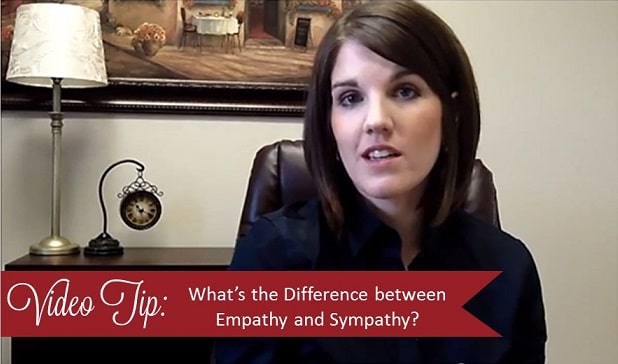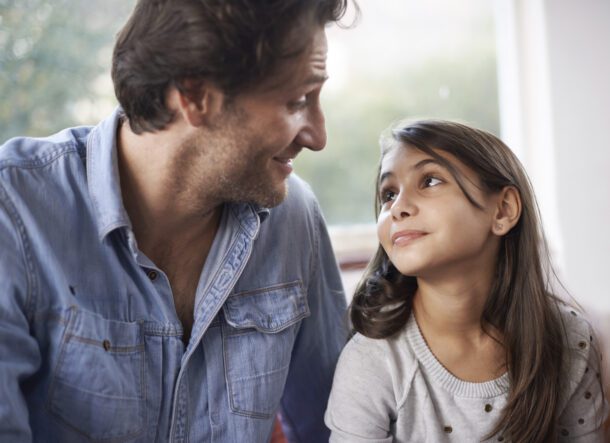
Often people think that empathy and sympathy are really the same thing, when in fact, they are very, very different.
This short, minute and a half video will explain and have you empathizing with the best of them in no time.
Intensive Marriage Therapy
by Dr. Kim Blackham

Often people think that empathy and sympathy are really the same thing, when in fact, they are very, very different.
This short, minute and a half video will explain and have you empathizing with the best of them in no time.
by Dr. Kim Blackham

“We don’t see things as they are, we see them as we are.”
~ Anais Nin
One cold wintery day, my oldest daughter, who was two at the time, woke up to a blanket of snow outside. Having no previous recollection of playing in the snow, she was anxious to go out and build a snowman with her dad. Unfortunately, having recently moved from a warmer climate, I had no boots or gloves for her, but she was determined. So I bundled her up in her coat and hat and then put two pairs of socks on her feet with her tennis shoes and two pairs of socks on her hands. Grinning from ear to ear, she ran out into the powdery snow and began making tracks through the yard. Watching from the window, I saw her delight as she and her dad built a meager yet important snowman. When I could tell they were getting ready to come in, I went into the bathroom and started filling the tub with warm water. When she came in, she was delighted and frozen. Her little face was red, and her hands and feet were icicles. I’m not sure the socks helped at all. I stripped off all her wet clothes, and with the anticipation of hot chocolate, she climbed into the tub. Instantly, she started screaming, “IT’S HOT!” I quickly yanked her out of the tub and felt the water. “Sweetheart, it’s not hot,” I reassured her as I picked her up and placed her right back into that water. “It IS hot!” she screamed. Yanking her out of the tub again, I realized that of course, the water felt hot.
by Dr. Kim Blackham

The following video clip beautifully illustrates the power of empathy, which is the ability to understand and share the feelings of another person. Empathy allows us to step into someone else’s shoes, truly listen to their experiences, and relate to their emotions. It goes beyond sympathy or pity; it is a genuine effort to connect and validate the human experience.
by Dr. Kim Blackham
Each year during the Christmas season, many of us enjoy reading or watching the classic tale of “A Christmas Carol” by Charles Dickens. While the story teaches us about the importance of generosity and not being stingy, there are deeper lessons to be learned. In my opinion, empathy is the central theme of this powerful parable.
On Christmas Eve, the ghost of Jacob Marley, Scrooge’s former business partner, visits him to warn him about the arrival of three spirits. Scrooge is curious about the heavy chains Marley wears and asks him about them. Marley explains that he is doomed to walk the earth, unable to help those in need and forced to witness their suffering. Scrooge is confused by this injustice and comments, “You were always a good man of business, Jacob.”
“Business!” cried the Ghost, wringing its hands again. “Mankind was my business. The common welfare was my business; charity, mercy, forbearance, and benevolence, were all my business. The dealings of my trade were but a drop in the comprehensive ocean of my business!”
“Why did I walk through crowds of fellow-beings with my eyes turned down and never raise them . . . ?”
What follows is a powerful transformation as Ebenezer Scrooge begins to see into people’s lives and hearts.
by Dr. Kim Blackham

As a parent or caregiver, teaching children about empathy can be a real challenge. It’s not a trait that comes naturally to most kids, especially in today’s society, where self-interest tends to be the norm. That’s why it’s essential to provide children with guidance and support as they learn to understand and care about the feelings of others. With time, patience, and positive reinforcement, you can help your child develop a strong sense of empathy that will serve them well throughout their lives.
Go to a public location where you can sit and watch other people coming and going–somewhere like the airport, a mall, a park, a fair, a sporting event, etc.
Find a place to sit that is in an area of moderately heavy traffic. You want it to be busy but not crowded. Then start asking your child questions:
COUPLES' THERAPY RETREATS
1 West Broad Street 11th Floor #31
Bethlehem, PA 18018
Contact Me
Copyright © 2024 Kim Blackham, Ph.D., LMFT
All Rights Reserved. Privacy Policy | Disclaimer

